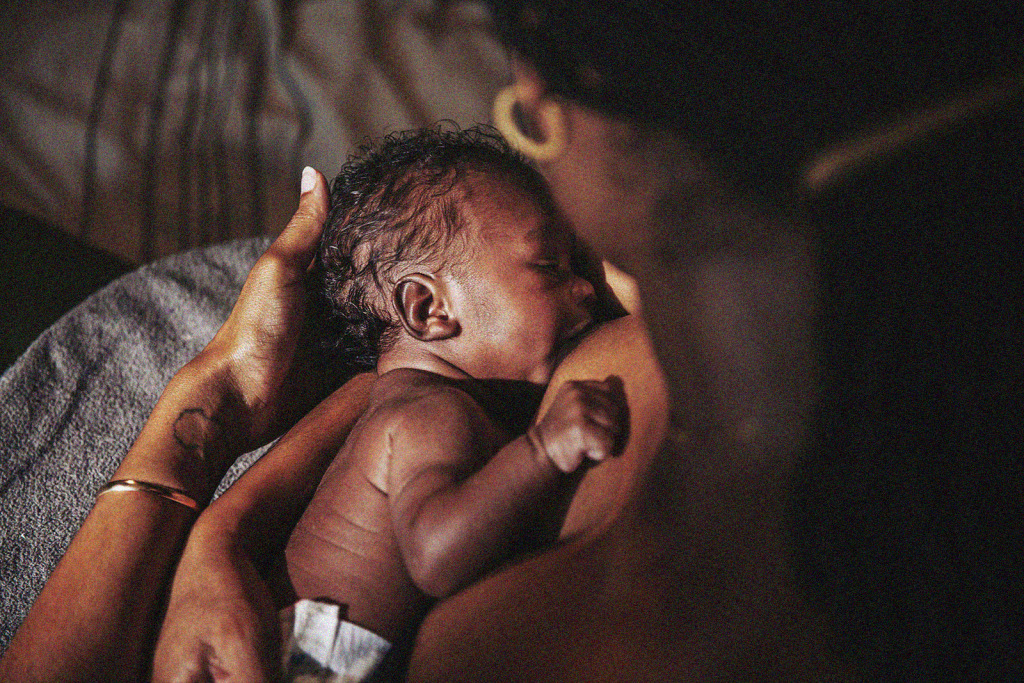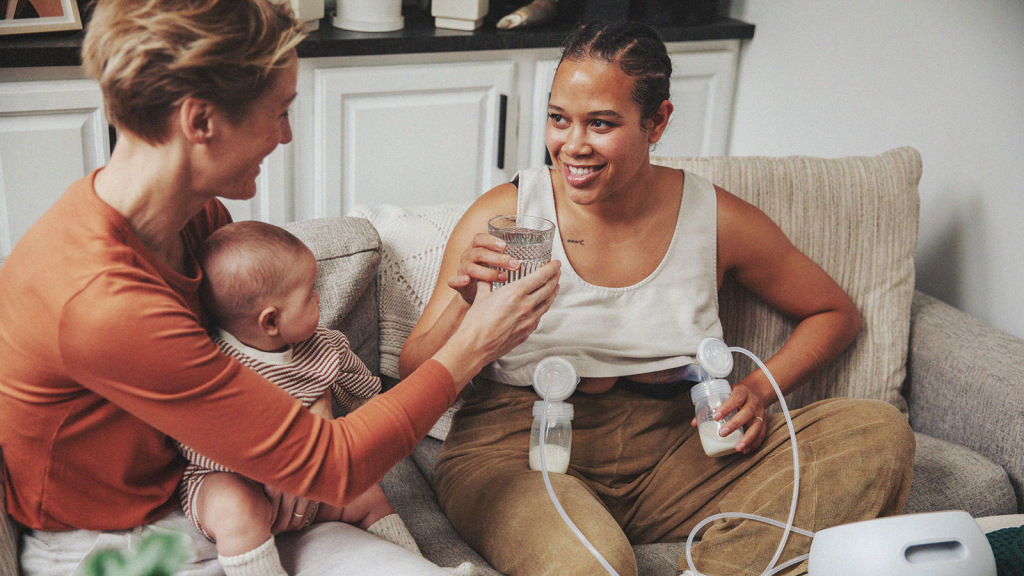What Is “Mommy Thumb” and How Can You Avoid It?
For all the joy a baby brings, parenthood can also mean new aches and pains. According to Dr. Sarah Clampett, PT, DPT, and Clinical Director at Origin, an insurance-covered, online and in-person physical therapy provider for women and mothers: “A majority of breastfeeding women are struggling with some sort of shoulder, back, neck, and/or wrist pain so it’s important to correct your posture and positioning early before it becomes a (painful) issue.” One condition Dr. Clampett has seen many times before is the dreaded “mommy thumb.”
What causes mommy thumb?
Also called “de Quervain’s tendonitis,” mommy thumb occurs when the tendons connecting your thumb and wrist become inflamed. For breastfeeding parents, this is usually due to “‘prolonged radial deviation’ aka turning your wrist for an extended period of time, creating strain on the thumb,” Dr. Clampett explains in this helpful article, Caring for Your Body While Breastfeeding: 4 Tips to Reduce Shoulder, Back, Neck & Wrist Pain. In other words, mommy thumb is usually the result of repeatedly holding your wrist in an awkward position to feed your baby. Lactating parents also experience decreased estrogen levels, which can contribute to stiffness in the hands and make them even more prone to mommy thumb.
What are the symptoms of mommy thumb?
Mommy thumb typically includes pain on the thumb side of the wrist that increases with flexion or extension. Some parents feel pain radiate towards the top of their thumb—while others experience pain up to their forearm. Since mommy thumb is an inflammatory condition, some swelling is common. And in some cases, parents may develop stiffness, reduced grip, or even a bump (or nodule).
What are the best breastfeeding positions to avoid mommy thumb?
“We like the mantra ‘bring the baby to you, not, bring your boob to the baby,’” Dr. Clampett shared. Your baby should be tummy to tummy with you to make sure you don’t have to overcompensate with your wrist, and pillows can help prop your baby up to just above your nipple. As Dr. Clampett says, “hand and wrist support are key.”
Other props like rolled up blankets can help stabilize your elbow, wrist and hand, too. From there, “it should feel like you are activating your hand to ‘steer’ your baby’s head towards your nipple but not supporting their full weight with your hand.”
If you’re not certain you’ve found a comfortable, sustainable feeding position, an International Board Certified Lactation Consultant can help set you up for success.
What should you do if you have mommy thumb and it’s not improving?
Physical therapy is a great idea—especially for new parents who are generally too focused on their babies to consider their own wellbeing. We love Origin because it specifically provides physical therapy to women and mothers, and it’s in-network for most insurance plans. Their team of physical therapists can address posture and mobility concerns, as well as any aches and pains you may be experiencing… including mommy thumb.
Remember, your own health is just as important as ever. If you haven’t added an IBCLC and a physical therapist to your lactation support team yet, know that Lactation Network and Origin are here to help!



